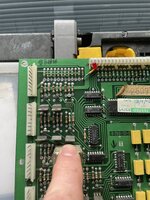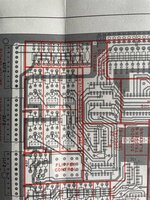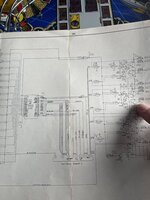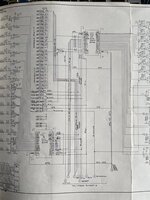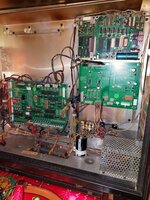Been helping someone out with a Gorgar that would not start a game.
Got it working so whilst I was there tested all the switches and coils.
Left kicker switch not registering in switch tests. Switch has a capacitor (22 mfd 100 volt electrolytic capacitor according to pinball repair manuals) that has broken off. This is the first time I have come across a capacitor on a kicker switch. What role does the capacitor play on this type of switch please? Reading the system 6 repair manual it says the kicker is a special solenoid which is not cpu controlled so from my limited knowledge of electronics I am guessing the capacitor stores an electrical charge and when the switch closes the charge is discharged to "manually" trigger the kicker?
I can swap it out for one of a higher voltage rating right so long as the uf rating (22) is the same? e.g.:

Thanks
Andy
Got it working so whilst I was there tested all the switches and coils.
Left kicker switch not registering in switch tests. Switch has a capacitor (22 mfd 100 volt electrolytic capacitor according to pinball repair manuals) that has broken off. This is the first time I have come across a capacitor on a kicker switch. What role does the capacitor play on this type of switch please? Reading the system 6 repair manual it says the kicker is a special solenoid which is not cpu controlled so from my limited knowledge of electronics I am guessing the capacitor stores an electrical charge and when the switch closes the charge is discharged to "manually" trigger the kicker?
I can swap it out for one of a higher voltage rating right so long as the uf rating (22) is the same? e.g.:

Axial Electrolytic Capacitors HI Temp 105C 22uf 450V | eBay
Find many great new & used options and get the best deals for Axial Electrolytic Capacitors HI Temp 105C 22uf 450V at the best online prices at eBay! Free delivery for many products.
www.ebay.co.uk
Thanks
Andy

